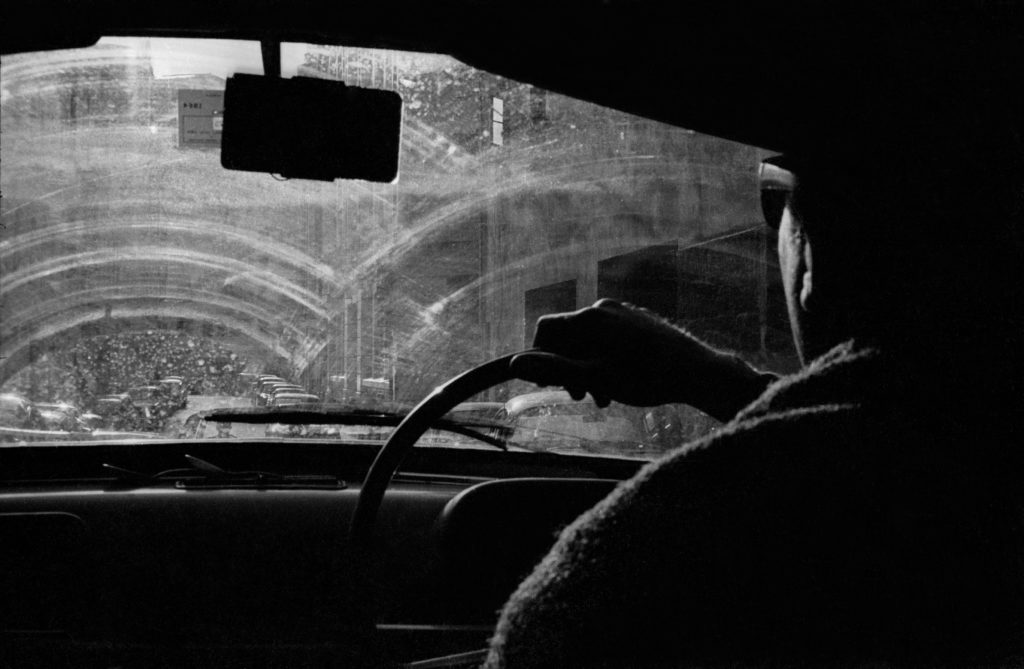ARTISTS Gary Baigent, Rodney Charters, Robert Ellis CURATOR Robert Leonard PARTNER Te Uru, Titirangi OTHER VENUES Te Uru, 5 June–16 August 2015 PUBLICATION texts Andrew Clifford, Robert Leonard
In the 1960s, Auckland was changing. It was becoming the big smoke. New motorways were enabling low-density suburban sprawl (the population had just passed half a million) and a counterculture was emerging. Unseen City offers a slice of 1960s Auckland through the eyes of artists Gary Baigent, Rodney Charters and Robert Ellis.
The show takes its name from Baigent’s audacious photobook, The Unseen City: 123 Photographs of Auckland (1967). Baigent described his 1960s Auckland as ‘a large number of houses spread about Grafton, Parnell, Mount Eden and Ponsonby, all filled with students, artists, pseudo-intellectuals, layabouts and bums, both bohemian and hobohemian’. His book avoids the beautiful and picturesque, preferring neglected prospects. Images of ruin and decay echo Baigent's attitude to technique. The book includes numerous ‘bad’ photographs: double-exposed, underexposed, or shot facing the sun. The sequence is bewilderingly random—there is no narrative. Images move from style to style, site to site, and subject to subject, without rhyme or reason, perhaps evoking the way one loses oneself in a city, experiencing chance encounters. Baigent mixes images of strangers and friends, straights and bohemians—speaking to the emerging generation gap.
The Unseen City was an antidote to the saccharine ‘beautiful New Zealand’ books, with their quality reproductions and texts by eminent novelists and poets. Printed on cheap, uncoated paper, which flattened contrast and suppressed detail, it was criticised for its careless photography and production, especially by other photographers. But today, everything about it seems classic. In the 1970s, street photography would become a dominant idiom in New Zealand art photography, but Baigent got in first.
Alongside Baigent’s photos, we show Rodney Charters’s Film Exercise (1966)—probably the first film ever made at Elam School of Fine Arts. Charters made it as a second-year student at Elam. It’s not only his first film, it’s probably the first film ever made at the school. The story is simple: a gorgeous girl (played by Shelly Gane, an architecture student) meets an enigmatic boy (Ted Spring, an Elam student) on a West Coast Auckland beach. They drive off, across the beach, through the Waitakeres, down the motorway, into the city. As night falls, they pass through Queen Street and K Road. Finally, they head to a party in a run-down villa (an art-school share house in Mount Eden). There, boy dumps girl to hang out with his mates.
The film’s road-movie structure offers a cross section of the city, passing from nature to culture, and from the public space of the CBD to a private home. The Queen Street / K Road sequence is remarkable for its kaleidoscopic presentation of pedestrian crossings, shops, and burger bars, flashing lights and neon signs, seniors and hipsters. Film Exercise is literally that, with sequences in different styles, all beautifully edited to a soundtrack by West Auckland rock band, the La De Da’s.
The show also includes early Robert Ellis drawings that reveal how much his famous Motorway paintings were grounded in his experience of his newly adopted city, with its new motorways. Some feature recognisable sites, including the Harbour Bridge and the Dominion Road Interchange. Part observation, part fantasy, they have a comic aspect, with spaghetti junctions and motorways veering off at roller-coaster angles. While the Motorway paintings offer God’s-eye views, Ellis’s drawings mix it up, mashing viewpoints and varieties of information—including text. In one drawing, forms spill out into the margins, colonising unused space, as motorways do.





































